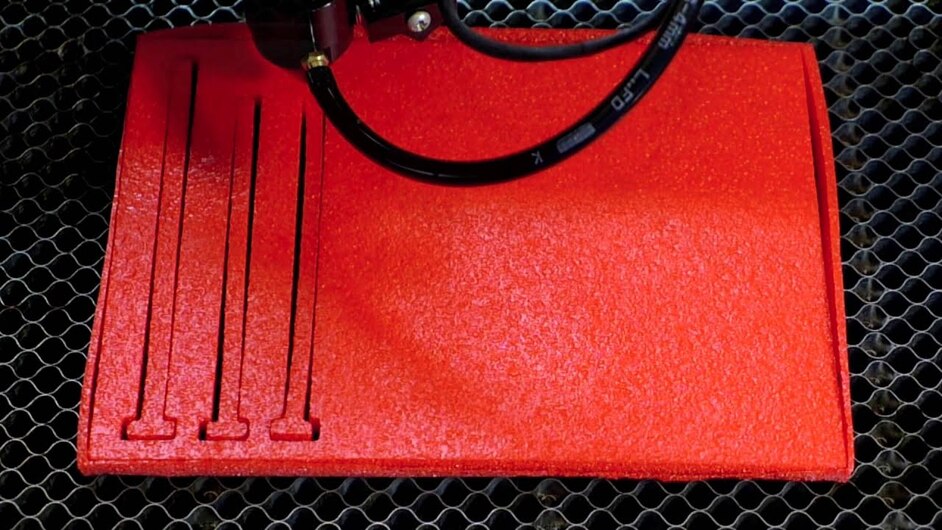Just thinking about doing foam inserts (assuming I can find a safe foam) for tools and such. What would be an easy way to get the exact outline of an object? Scanning? Hand measuring?
Quickie version - Take a digital photo against a white background, light from both sides to eliminate any shadows. Any good with Photoshop? If so, select the background (white) and drop out the image - the resulting negative shape can be turned into vector art to guide the laser. Again, quickie version…
Hmm, that’s a good method. I guess throwing a ruler next to it will help with scaling as well. Thanks!!!
I suspect that if the object is small enough to fit inside the glowforge (depth-wise), you should be able to treat the object like a drawing in the software.
Oh, good call. I hope so!!
I intend to do exactly this with the drawers of my kennedy boxes.
My plan is to put white paper in the bottom and then arrange all the tools on top.
Shoot a picture from the top and then use illustrators vectorize options to make outlines.
I doubt they need to be super precise.
From what I have read Polyethylene (PE, or PEF) foams are good candidates although they do produce some organic vapors when cut.
Oh, that’s a good way to do it. One way or another, they will need to be vectorized (that a word?). At this point I plan on setting up an overhead rig to put my my camera on and then making a lightbox underneath it. This was it’ll be streamlined. We’ll see how it works. 
Oh, that sounds promising!! I’ll have to look into it!
Yes, vectorized is a word.
You can also use a flatbed scanner by laying the object on the scanner bed and leaving the lid open – getting a light object on a black background (clear plastic works better if you coat it with acrylic paint first, and let it dry of course). I’ve used this technique to create outlines for many objects intended for 3D printing.
If you use a camera, you have to make sure you are shooting straight on to the object, otherwise you’ll get perspective distortion. You also need a good lens or software to remove lens distortion.
With a scanner, the distortion at the bed usually isn’t too bad, but anything not perfectly flat on the bed will have increased distortion away from the center line of the scanner.
Oh good call on the perspective. I like the scanner idea This would work well with flat/shallow items!!!
This is precisely why I kept my old scanner when I went to an all-in-one for documents.
Also (while keeping in mind that using eye protection is always a good idea as I doubt it is a good idea to look directly into the scanner bar as it is passing back and forth) you can get some pretty interesting image results out of a scanner when it is used incorrectly. When I was in film school we used to play with blowing smoke across the glass as the scan bar moved for crazy looking dvd menu screen backgrounds, it gives you a similar but different effect as when you get when you follow a moving object with panorama mode on an iphone, if you have ever messed with that.
My scanner outputs PDF, should be a simple work flow.
This is how I get exact shapes for use in CAD applications:
- Photocopy item (will appear full size)
- place black sheet of construction paper behind photocopy and cut out shape.
- Scan in the black outline that’s been glued to an 8.5x11 sheet of paper.
- Use online-convert.com to convert scanned image to SVG file.
- Import SVG into CAD
I’m sure there are easier methods, but this one works for me overtime.
Creative!!!
Waaaay low-tech idea: if the tool isn’t very complex and the outline doesn’t have to be extremely precise, you can always try hand tracing it!
I would be wary of cutting polyethylene (especially high-density polyethylene aka HDPE) as I’ve heard that it will melt very badly.
While I have also read that HDPE melts when cut, the much less dense PE foam looks like it cuts well.
Take a look at this video showing exactly the sort of thing we are discussing here:
Whoa, nice!! That’s great to know- I spent years being deathly afraid of even bringing foam into the laser cutter room of my school because of so many restrictions and bans from people starting major fires. Thanks!
To reduce potential perspective distortions with wide lenses, make sure you place the camera away from the subject and zoom in as much as you can. This will ensure that you will get an isometric view of the outline of the object.
I’m hoping we can utilize the scanner in the Glowforge to automate this process. I’m hoping we can put the objects in the bed, scan them for the outline, then be able to save the scan and import as a DXF or SVG. I’ve used the flatbed scanner method, but this should be easier and more accurate!
As long as they’re flat enough…
It’s easy enough to do flat objects on any old flatbed. I’m trying to do round objects like Screwdrivers, Pliers, and Microphones.
